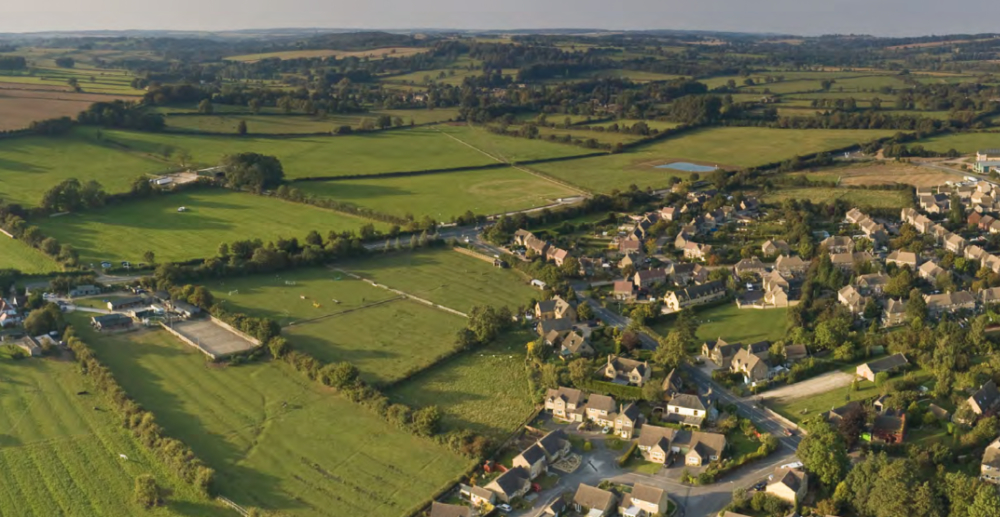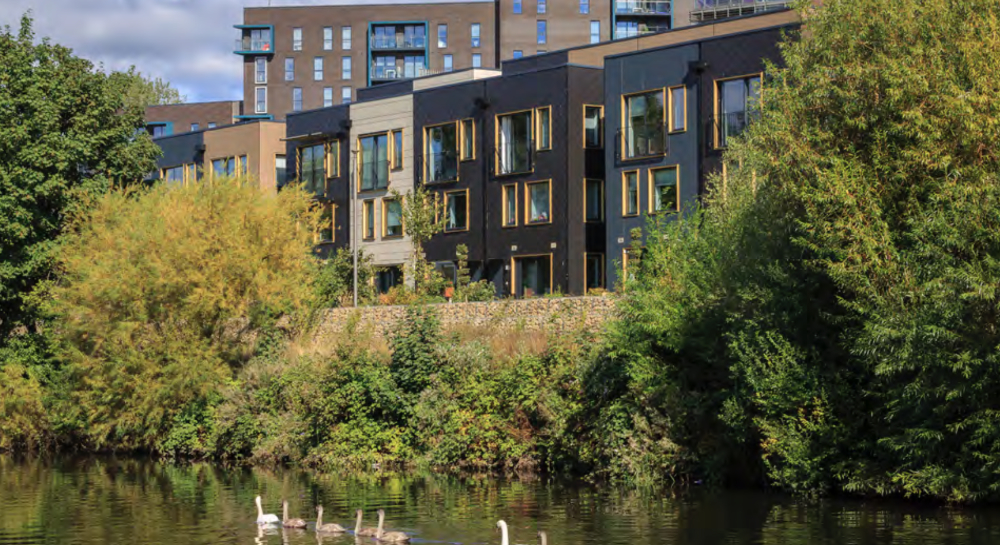From blue to red and brown to green; a shift in development priorities?
This article was initially written prior to the election result, since Labour have been in power a number of related initiatives along with consultations have been launched; here are some other articles related to the theme: NPPF consultation briefing notes on terms, NPPF, Decent Home Standards and brownfield passport consultations, grey belt and green belt.
In July last year, the Conservative government outlined its long-term plan for housing, which committed to “a new era of regeneration, inner-city densification and housing delivery across England” and launched its visions for growth in London, Leeds and Cambridge. The Spring Budget made further commitments to these cities, allocating funding for London and Leeds and promising both a development corporation in and a future long-term funding settlement for Cambridge.
The same day, the government also published an independent review of the London Plan and, following this highly critical report, Michael Gove ordered the London Mayor Sadiq Khan to conduct a partial review of the plan. There were two specific areas of focus. The first industrial land: the government believes that of the 6,800 hectares of land used for industry in London, 736 hectares could be used for housing. The second was opportunity areas which have not delivered the intended 2,500 homes. For the Conservative party, brownfield development remained the priority.
In a speech on 19 April, Keir Starmer set out his policy for housebuilding, specifically freeing up space for between 100,000 and 500,000 homes by building on “ugly” parts of the green belt land. His proposals included prioritising brownfield land within what is currently designated green belt but also improving green spaces such as parks and woodlands. The ‘grey belt’ became a focus for Starmer in many of his pro-development speeches. He depicted a disused petrol station as an example of land within the Green Belt which had little aesthetic value but considerable development value. The petrol station, along with “disused car parks” and “dreary wastelands”, have since been branded the ‘grey belt’, a new description for protected land which would otherwise be made available for development based on its suitability and sustainable location.
As the Conservative government is now replaced with a Labour administration, has the preferred location for new homes changed. This is unlikely to be straight-forward in addressing London’s housing crisis, as Khan is committed to protecting the capital’s green belt and has stated that even “derelict and unsightly” parts should be shielded from development. Why Khan has such an extreme view on not releasing the green belt remains a mystery. Some commentators have suggested that his reasoning is environmental – the green belt being the ‘lungs’ of London, or the ‘climate safety’ belt. Other suggestions include him wanting to ensure transport emissions do not increase from sprawl, supporting London’s resilience to a changing climate through preventing flooding and production; thus providing important habitats for wildlife and allowing space for recreation and relaxation.
While that may be true, the opposing view is that the green belt has contributed to long commuting distances, house price inflation, less choice and poorer quality, smaller homes. As we are now building greener developments that focus on active travel, sustainable energy and increased biodiversity, releasing the ‘grey belt’ for sustainable development is eminently logical. Almost unquestionably, green belt release is the single most effective way of resolving the housing crisis. There are many parts of London where the green belt is isolated pieces of land between major transport infrastructure. These are prime sites for the development of employment and homes. Some London boroughs, including Labour-run Enfield, boldly proposed major green belt release in their draft local plans, knowing that it will not sit well with Khan but that it will align with the policies of the Labour government.
Development on the green belt – and there is substantial green belt surrounding London, Leeds and Cambridge – is one of the most contentious planning policies that a government could introduce (evidenced by the fact that the conservative government made great efforts to avoid doing so). Clearly Keir Starmer believes that it is a cause worth fighting for, but Sadiq Khan was opposed to this key Labour planning policy. There is reason to believe that the Mayors of Cambridgeshire and Peterborough and the West Yorkshire Combined Authority are also very protective of the green belt. The Labour government may have to pull multiple levers to genuinely achieve a step-change in housing delivery. This would inevitably include delivering some development on green belt land that does not neatly fit the ‘grey’ label. Difficult decisions and continuing political disagreements lie ahead if we are to house our growing population.
This article appears in the AT Journal summer issue no 150 as 'Will urban development priorities shift from brown to green if the government shifts from blue to red?' prior to the election, it was written by Katy Davis, Planning & Development Partner, Carter Jonas (London office), and adjusted by the editor post election result.
--CIAT
[edit] Related articles on Designing Buildings
- A guide to the updated National Planning Policy Framework.
- BRE response to the NPPF consultation.
- Consultation on proposed reforms to NPPF and other changes to the planning system
- Detailed planning permission.
- How long does it take to get planning permission.
- How long does planning permission last.
- IHBC response to revised NPPF.
- Killian Pretty Review.
- Local plan.
- Localism Act.
- National Planning Framework.
- National planning policy framework NPPF.
- National Planning Practice Guidance.
- Neighbourhood development order.
- Neighbourhood planning.
- NPPF inquiry.
- NPPF consultation briefing notes on terms.
- Outline planning permission.
- Planning legislation.
- Planning permission.
- Planning policy replaced by the NPPF.
Featured articles and news
RTPI leader to become new CIOB Chief Executive Officer
Dr Victoria Hills MRTPI, FICE to take over after Caroline Gumble’s departure.
Social and affordable housing, a long term plan for delivery
The “Delivering a Decade of Renewal for Social and Affordable Housing” strategy sets out future path.
A change to adoptive architecture
Effects of global weather warming on architectural detailing, material choice and human interaction.
The proposed publicly owned and backed subsidiary of Homes England, to facilitate new homes.
How big is the problem and what can we do to mitigate the effects?
Overheating guidance and tools for building designers
A number of cool guides to help with the heat.
The UK's Modern Industrial Strategy: A 10 year plan
Previous consultation criticism, current key elements and general support with some persisting reservations.
Building Safety Regulator reforms
New roles, new staff and a new fast track service pave the way for a single construction regulator.
Architectural Technologist CPDs and Communications
CIAT CPD… and how you can do it!
Cooling centres and cool spaces
Managing extreme heat in cities by directing the public to places for heat stress relief and water sources.
Winter gardens: A brief history and warm variations
Extending the season with glass in different forms and terms.
Restoring Great Yarmouth's Winter Gardens
Transforming one of the least sustainable constructions imaginable.
Construction Skills Mission Board launch sector drive
Newly formed government and industry collaboration set strategy for recruiting an additional 100,000 construction workers a year.
New Architects Code comes into effect in September 2025
ARB Architects Code of Conduct and Practice available with ongoing consultation regarding guidance.
Welsh Skills Body (Medr) launches ambitious plan
The new skills body brings together funding and regulation of tertiary education and research for the devolved nation.
Paul Gandy FCIOB announced as next CIOB President
Former Tilbury Douglas CEO takes helm.
UK Infrastructure: A 10 Year Strategy. In brief with reactions
With the National Infrastructure and Service Transformation Authority (NISTA).


























